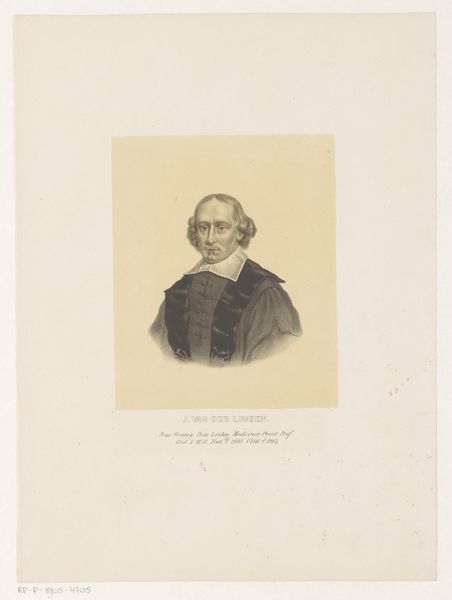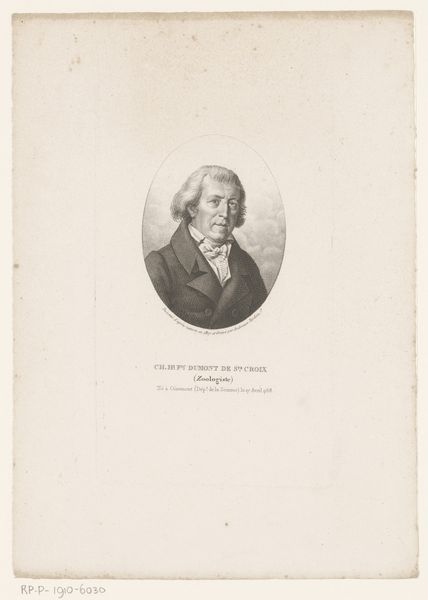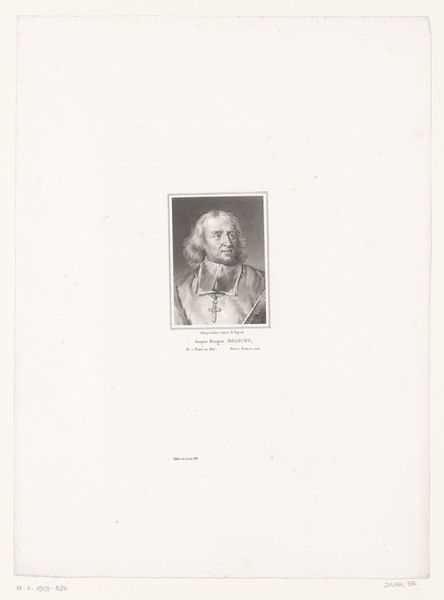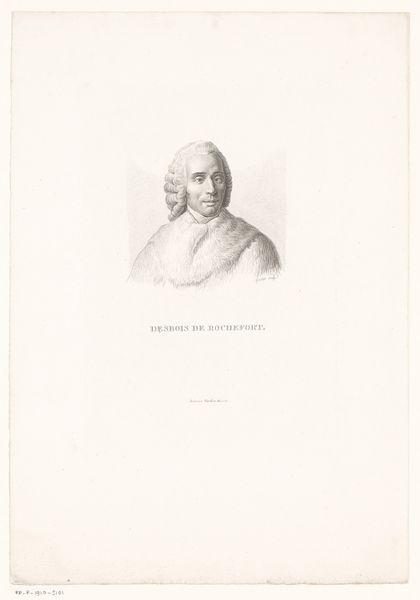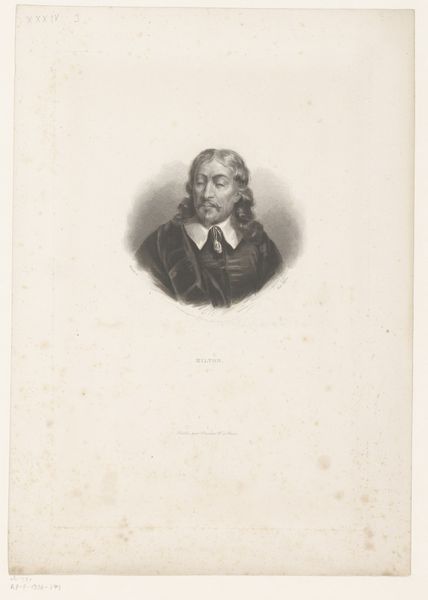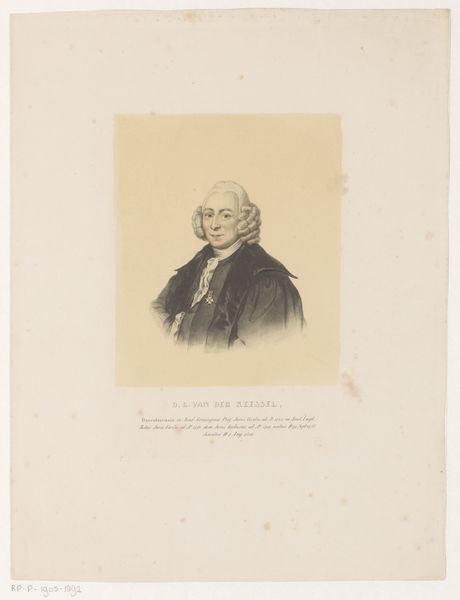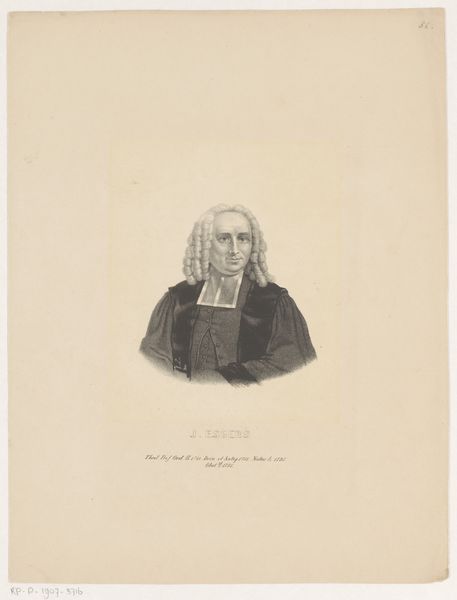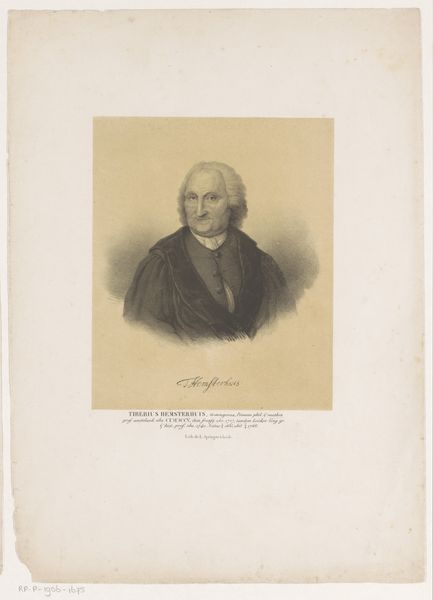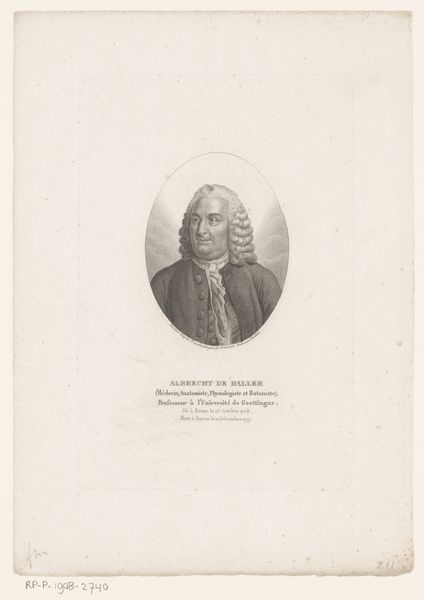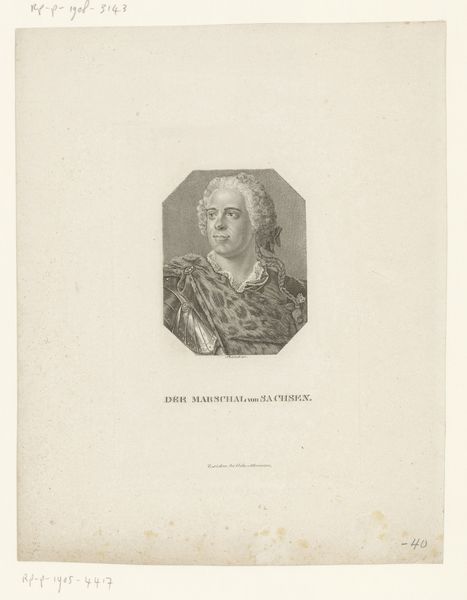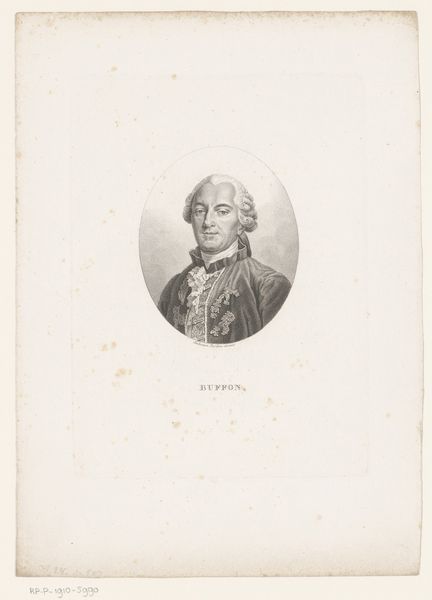
print, paper, engraving
#
portrait
#
neoclacissism
#
aged paper
#
light pencil work
# print
#
pencil sketch
#
old engraving style
#
paper
#
engraving
Dimensions: height 201 mm, width 140 mm
Copyright: Rijks Museum: Open Domain
Curator: Welcome! Let's turn our attention to a work attributed to Ambroise Tardieu, dating sometime between 1818 and 1832: "Portret van Jean Astruc." It's an engraving, a print on paper, showcasing a notable figure from the past. Editor: The first thing that strikes me is the sheer austerity. The cool greys, the very controlled lines of the engraving—it speaks to a certain formality, almost detachment. Curator: Absolutely. This aligns with the Neoclassical movement. Look at the emphasis on clean lines, rational order, and the intention to capture the likeness of the sitter in a seemingly objective manner. There is almost a scientific aspect to it. Editor: Objectivity is always a construction. His luxurious fur stole signals a person of wealth and status. And while his expression might seem neutral, that wig—a symbol of power of its own—along with the subtle shading around the eyes, hints at more complex depths, anxieties maybe. How much are we, even now, projecting onto him? Curator: That’s a crucial point. The print itself, through its distribution, helped solidify Astruc's image. He was a famous physician, a professor at Montpellier, and considered one of the founders of the study of venereal diseases. The piece wasn’t just a portrait; it played a role in crafting and perpetuating his public persona. Editor: Considering Astruc’s medical focus, that constructed image matters so much. Was this designed to inspire trust in his clientele? To mask or reveal parts of himself and the medical ethics of the time period? Curator: His legacy is definitely complicated. This piece participates in the creation and propagation of the authority and importance of this historical figure. Editor: Seeing this image today invites so many layers of interrogation, doesn't it? It reminds us how images function within power structures, reflecting and reinforcing the values of their time. Curator: Indeed. Thinking about the engraving process—how an image is meticulously transferred and replicated—reveals much about the societal impulse to document, categorize, and preserve certain narratives. Editor: The act of printing suggests dissemination of knowledge, perhaps a democratization. Was it accessible to everyone, or just certain circles of society? Curator: Limited accessibility would have shaped the piece's function of control, in a world before widespread visual media, an engraved portrait offered control over public perception in elite, literate circles. Editor: A valuable reminder that what appears to be a straightforward portrait holds a multitude of meanings and speaks to the enduring power of representation.
Comments
No comments
Be the first to comment and join the conversation on the ultimate creative platform.

